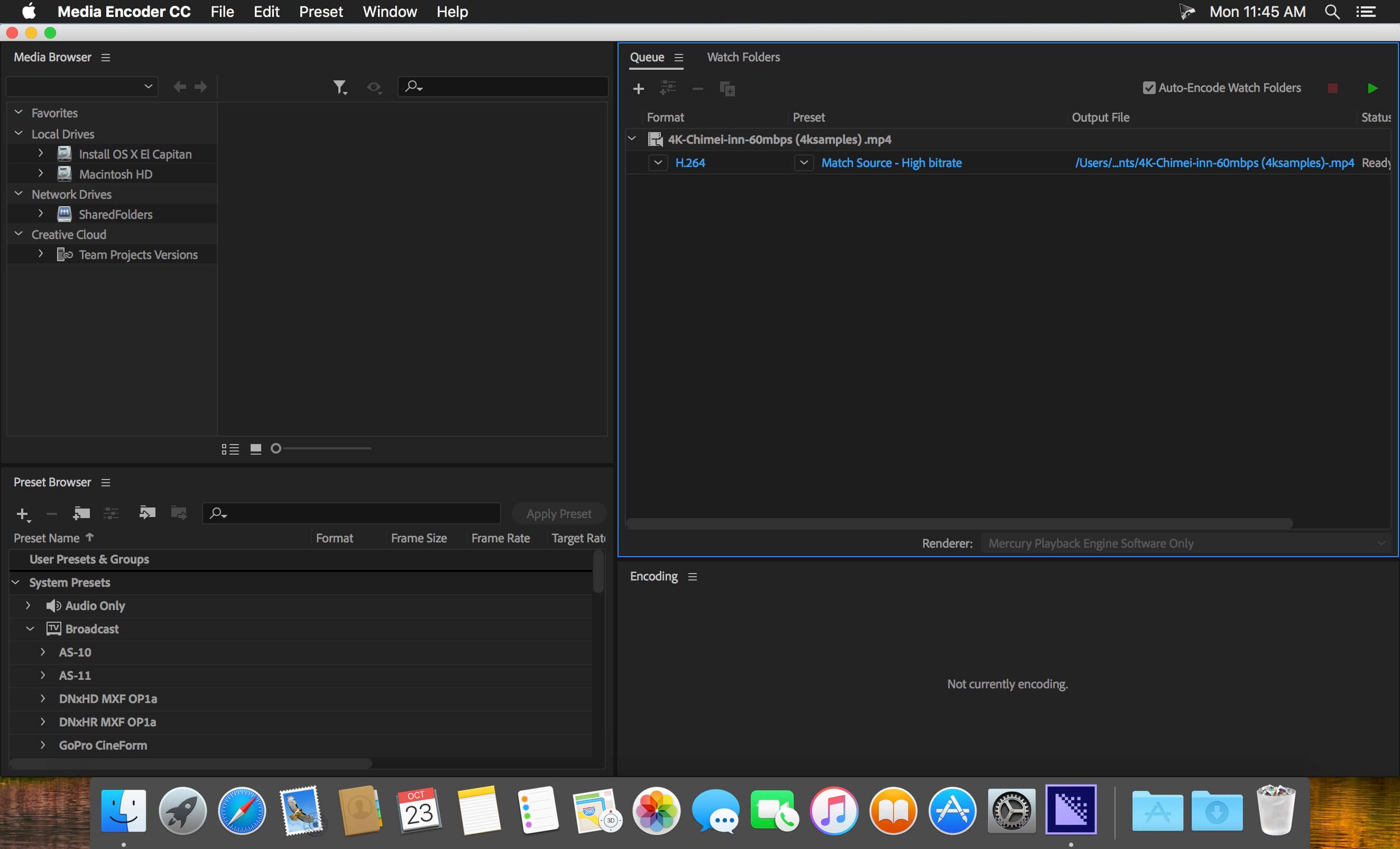
- #Adobe media encoder cc optimize rendering full
- #Adobe media encoder cc optimize rendering pro
- #Adobe media encoder cc optimize rendering software
#Adobe media encoder cc optimize rendering pro
More on this later.įor some reason there is no tooltip for Render at Maximum Depth in Premiere Pro 15.0, so you’re left to your own interpretation for that one.
#Adobe media encoder cc optimize rendering full
What does “Improves the video’s quality” mean? This explanation is also not the full picture: it doesn’t necessarily increase the encoding time. “Rendering at maximum bit depth improves the video’s quality but increases how long encoding takes.”

This is the explanation that Premiere Pro offers you when you hover the pointer over the Render at Maximum Depth button in the Export Settings. The Maximum Bit Depth switch also requests 32-bit float from the importer, which is otherwise only 8-bit. This is good because it will reduce banding and other artifacts while also keeping overbrights and super-blacks intact, never clipping levels. What does Maximum Bit Depth do?Īt first glance, it seems that the Maximum Bit Depth switch simply forces Premiere Pro to render supported effects in 32-bit with floating point accuracy. It should be safe to leave it at performance. Memory preferences can be set to be optimized for memory or for performance. I leave this set to the default, which is Performance. I always have my memory preferences set to Optimize rendering for Performance.Įven though the warning says that it’s “highly recommended” to set this to Memory, some users have reported that doing this will make their systems less stable. Unless you have a high-end computer with a super-high core count you shouldn’t run into memory-related trouble with any of these settings. Or ignore the message altogether, thinking “I have lots of RAM” like most of us do. But if you think it’s a cause for concern, you can go to the Preferences for Memory and set it to Optimize rendering for Memory. Please check Adobe Premiere Pro Support Center for recommended system requirements. These settings are designed for high-performance systems. Setting the Optimize Rendering preference to ‘Memory’ is highly recommended when Max Quality or Max Bit Depth rendering is on. Yep, if you choose to activate any of these two settings, you’ll get the following warning. OK, with that out of the way, let’s see what happens when you enable these settings in your sequence. When you export your timeline, you’ll see the same settings, one under the Video tab and one in the bottom part of the box. If you’ve already created a sequence, and didn’t pay attention to the settings, you can go to Sequence Settings ( Sequence > Sequence Settings) and change them there. If you create a new sequence manually in Premiere Pro ( File > New > Sequence), you’ll see this dialog. You’ll find both the Maximum Render Quality and the Maximum Bit Depth settings in at least three different places in Premiere Pro: In the New Sequence dialog, in the Sequence Settings and in the Export Settings.

Test 3: Export to ProRes 422 HQ, with Lumetri effect (RGB Curve), GPU enabled.Test 2: Comparison of exported files from test 1, Difference mode, No effects.Test 1: Export to ProRes 422 HQ, No effects.“The export will match what you see in the program monitor”.“When you have GPU acceleration enabled, the settings don’t matter”.“Maximum Bit Depth doesn’t help if your source or destination file is 8-bit”.“Maximum Render Quality only affects scaling”.Max Render Quality affects how some formats are decoded.Max Render Quality also affects the way color is rendered.Your choices in Sequence Settings don’t matter that much.You don’t normally see full quality in the program monitor.Premiere Pro has several different scaling algorithms.OK, but what does “Better Scaling” mean, exactly?.

#Adobe media encoder cc optimize rendering software
How can you tell if a clip is rendered in GPU mode or Software Only mode?.


 0 kommentar(er)
0 kommentar(er)
